
Laser Run to Benicia
Seven brave sailors and three support volunteers showed up at Richmond Yacht Club Sunday morning, July 1, to tackle the Second Annual RYC to Benicia Run. We had four Radials (Chris, Dan, Peter and Hideki) and three full rigs (Marcel, Julian and myself) plus Josh, Chris and Jocelyn in our support boat.
We met early and had a wonderful breakfast, which was part of the RYC Pacific Cup festivities but was open to all. After breakfast we rigged up under gloomy weather; when the sun peeked through the clouds, it looked like a post-nuclear scene since the fires from the north were affecting the light.
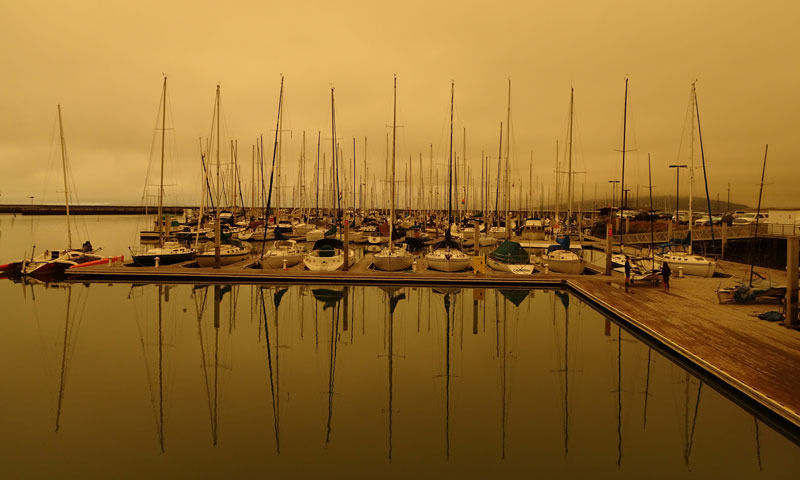
We finally got going at 11:30 with basically no wind. We drifted to the Richmond Bridge where the wind finally filled in at 12:30. Toshi Takanayagi followed us past the bridge but eventually turned around, as he had planned. "On my return, the wind got stronger, so I worried a little bit," said Toshi. "I had to sail very carefully to go back to RYC."
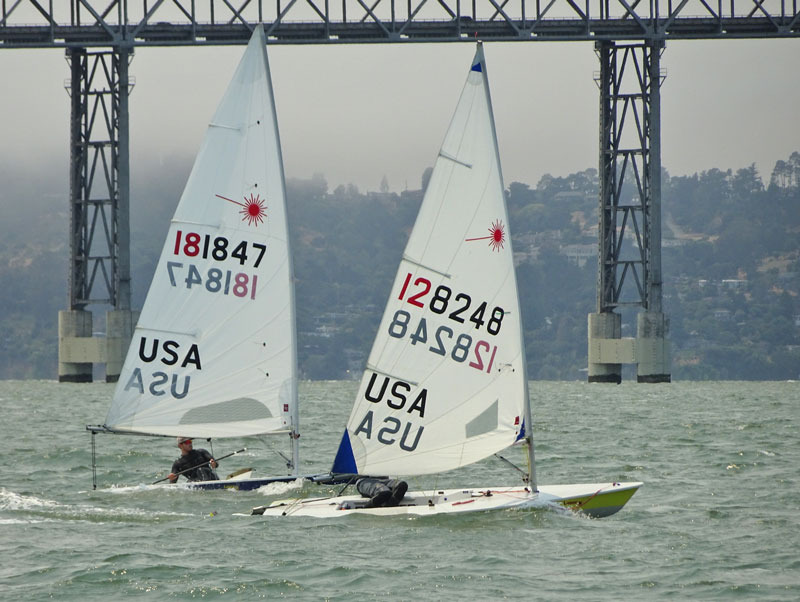
The course was 27 miles (from GPS) downwind with winds getting stronger as we went. The wind was more southerly than usual so it was mostly a broad reach with not much by the lee.
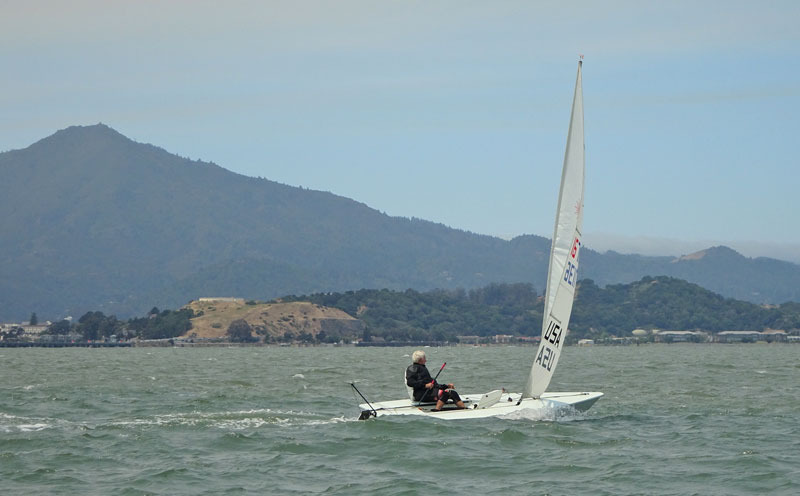
About halfway Dan had problems with his shoulder; after some debating, Josh (our valiant support-boat captain) decided to step into Dan’s boat and sail the rest of the way while Dan rode in the support boat. This was no easy feat; anyone who has sailed Lasers knows how tricky they are, and Josh, though clearly a very accomplished sailor, was very new to the Laser; and learning in a long-ass downwind in 20 knots is not what I would recommend as an introduction.
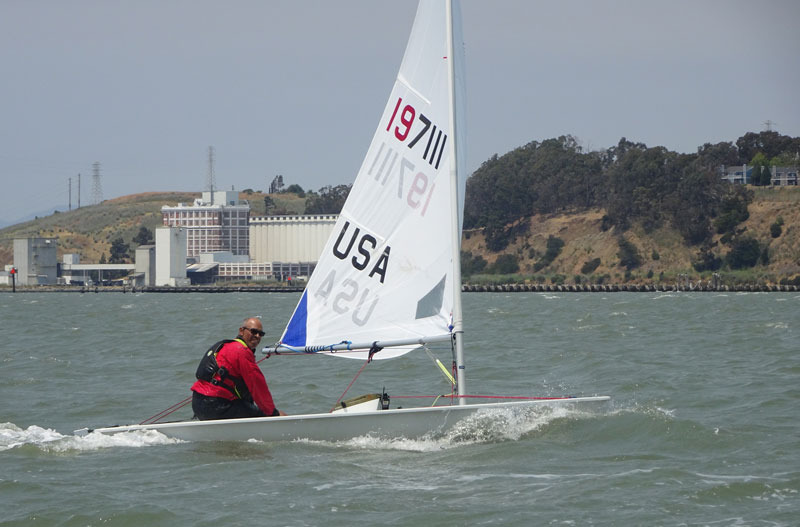
We did the run during a flood, but waves were pretty long, considering San Pablo Bay is only about 12 feet deep. We were passing waves mostly. After we went under the Carquinez Bridge, it became a tighter reach with little waves, and we were flying (or it felt like it: 17 mph max speed).
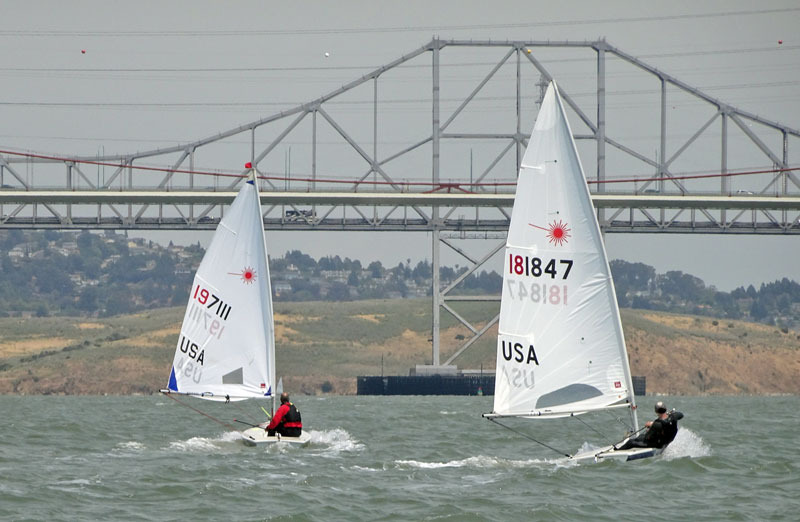
It took us about four hours. While the first four boats were de-rigging we watched as Dan’s boat sailed in with Josh driving, Pete’s boat sailed in with Julian driving and then Julian’s boat sailed in with Julian driving… War stories were told while drinking wine and packing up. We should probably make it a monthly event.
Lunatic Power
If yours was one of the 356 entries that did not finish this year’s Three Bridge Fiasco, besides scanning the horizon for breeze and tweaking sails, you had some time to contemplate the challenges and opportunities of clean energy. You faced the relentless forces of powerful tidal currents without any power from the wind. Does it make you think that all those turbines we’re putting up in the air should have a parallel set underwater?
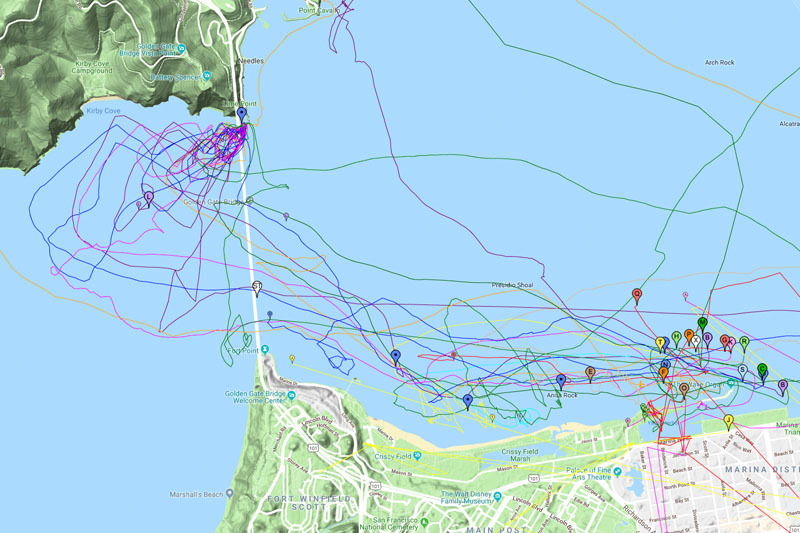
As TBF racers can affirm, tidal power is reliable; wind is less so. As a result, some lunatics are trying to figure out how to capture this trusty energy from the moon. The English paper the Guardian highlighted progress being made to harness tidal power, which would work well with the ample supply in our always-in-motion Bay.
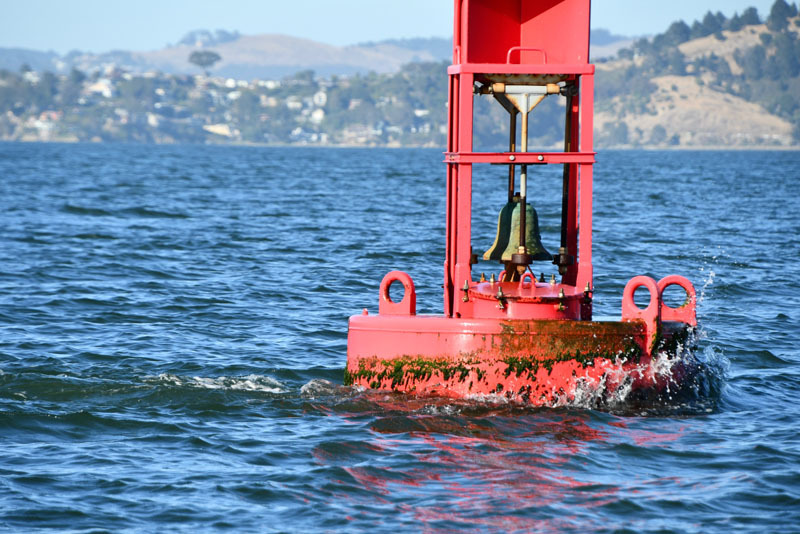
©2018 Latitude 38 Media, LLC
As we reef for midsummer winds the current has less impact, but it won’t be long before, as they say, the tide will turn and the current will again be overpowering the wind. Racers on San Francisco Bay know it’s a delicate balance between wind and current choices. At some point the energy grid may incorporate a similar balance.
Who were the four who finished the Three Bridge Fiasco? They deserve one more shout-out for solving the puzzle and persevering: Congratulations to John Gray and Matt Van Rensselaer on the mighty Moore 24 Immoral, who finished first at 5:25 p.m.; Christopher Harvey and Dan Mone on Mojo at 5:40 and Mark Zimmer and Mark Lewis on Khimaira at 5:43 (F-25c trimarans); and the final finishers, Will Paxton and Zachery Anderson on the Express 27 Motorcycle Irene (currently doublehanding to Hawaii in the Pacific Cup) at 6:22. The deadline to finish was 7 p.m.
And we remind ourselves that, despite our best efforts, sometimes ‘we go where the current goes’.
News Flash: First Finisher in Pac Cup
The first of the Pacific Cup finishers has arrived, as Charles Devanneaux and crew Matthieu Damerval aboard the foiling Beneteau Figaro 3 A Fond le Girafon sailed across the finish line at 15:59 PDT.
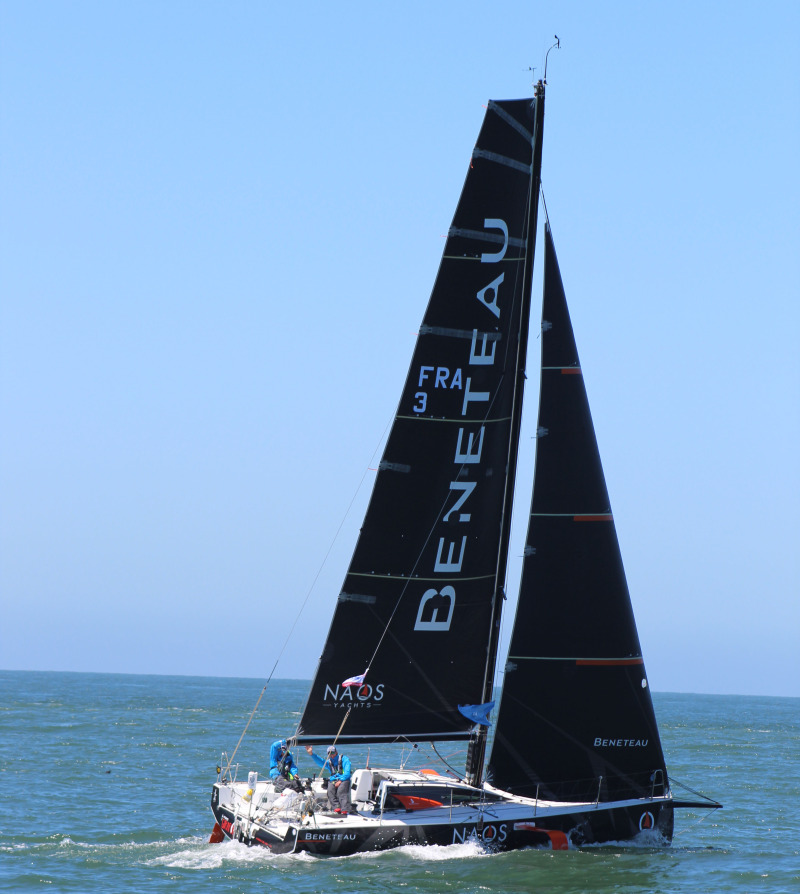
Hot on their heels is the scratch boat in the fleet, the Mills 68 Prospector, which is still about 70 miles out as we write. Over the next few days, the rest of the fleet will be making their way to the finish line at the Kaneohe Yacht Club on the East Shore of Oahu.
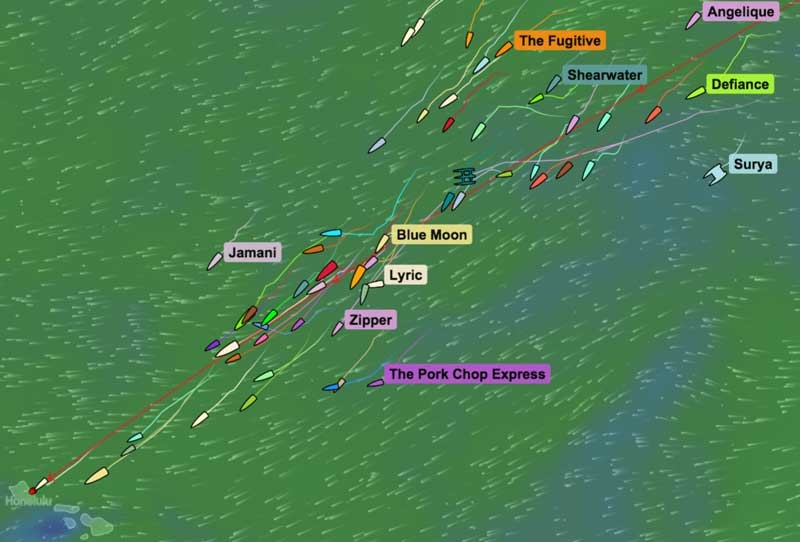
There are many hard fought battles following up behind. You can follow the upcoming weekend finishes on the live tracker and keep up with the news on the Pacific Cup news feed.
Latitude Movie Club: The Disaster Film
Latitude Nation — We were looking forward to reviewing a sailing movie in ‘real time’, but alas, Adrift came and went before we managed to get ourselves to the theater. (Did anyone out there happen to catch it? If so, we’d like to hear from you. And be sure to check out this review on SF Gate by Mick LaSalle).
Adrift is based in the true story of Tami Oldham Ashcraft, who was on a delivery from Tahiti to San Diego with her fiancé Richard Sharp in 1983 on the 44-ft sailboat Hazana when they were caught in Hurricane Raymond. As the storm swallowed them, Ashcraft was down below when Hazana was knocked down. "As she closed the door, she heard Sharp shout ‘oh my god!’ before the boat capsized. The force threw Ashcraft against the wall, knocking her unconscious," wrote www.allthatsinteresting.com. "When she awoke, the main cabin was filling with water, the masts were broken clean off, and the sails were dragging in the water, but the ship was miraculously still afloat." But Ashcraft’s fiancé was gone. She managed to jury rig a sail, and, using a sextant and watch — and surviving on canned food and peanut butter — navigated some 1,500 miles to Hawaii. Ashcraft survived 41 days at sea, and eventually wrote the bestselling book Red Sky in Mourning: A True Story of Love, Loss, and Survival at Sea.
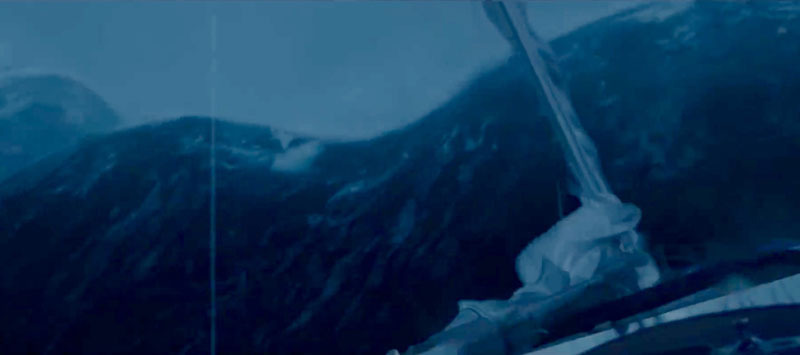
To be honest, we have a hard time getting excited about seeing another disaster/survival at sea movie. It makes sense that Hollywood would latch onto this kind of story — triumph over adversity is the movie industry’s bread and butter. But as sailors, we find this trope tired and played-out. An extreme and anomalous part of the sailing life is over-represented, and of course, over-dramatized and often full of glaring inaccuracies that make sailors scream at the screen. (In his critique of Adrift, Mick LaSalle said, "A good rule of thumb about lost-at-sea movies: The good ones make you worry about the people and wonder if they’ll ever get off that boat. With the bad ones, you also worry — about whether you’ll ever get off that boat.")
This sentiment was exemplified for us in the 2013 film All Is Lost, which was actually well received by Hollywood critics (www.rogerebert.com gave it four out of four stars, Rotten Tomatoes ranks it at 94%; Robert Redford was also nominated for a Golden Globe for best actor). But any time we mention the movie to sailors, we overwhelmingly see eyes roll and hands thrown in the air in disbelief. "Why didn’t he turn his pumps on immediately once he hit the container?" asked one Latitude editor. "Oh, so he just built one layer of fiberglass and that was it," said another accomplished sailor.
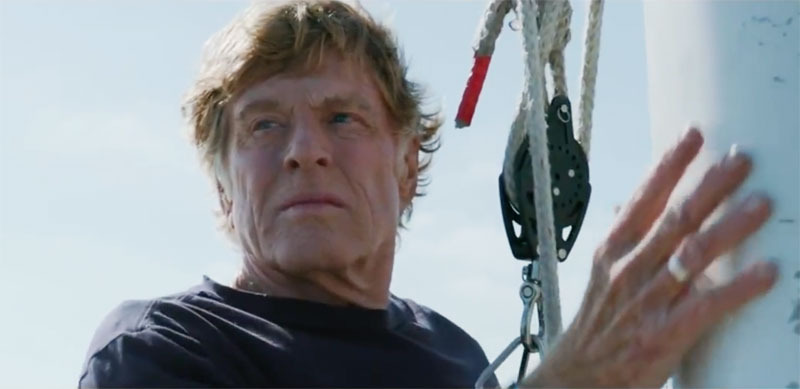
To be fair, All Is Lost started with promise. It showed a singlehanded sailor going through the motions of his seamanship to adapt to catastrophe (no matter how much we disagreed with his choices). The film was something of a breakthrough for the artistic choices by writer/director J.C. Chandor; there’s nearly no dialogue, and no narrative looking at Redford’s life — we the audience are simply dropped onto a boat at sea with her skipper the moment disaster strikes. "One of All Is Lost’s greatest creative judgments is its lack of a backstory. There are no scenes here of contrasting moments of peace on land where Our Man was the lord of all he surveyed," wrote critic Ali Arikan.
But the film descends into disaster-movie hyperbole. Redford manages to recover from his collision with a shipping container, but then runs into a terrible storm and loses his boat anyway. The film almost feels like ‘torture porn’, where the object is to savage the protagonist, just to see if they can survive while we watch from the comfort of our homes.
If we’re talking disaster/survival at sea, then one of our favorite movies is Life of Pi, which is in no way a sailing movie, but was a wonderful book made into a beautiful movie by director Ang Lee. It is one of the most step-by-step looks at being alone on the ocean, rationing provisions, keeping the mind occupied . . . and, oh yeah, training and caring for a tiger.
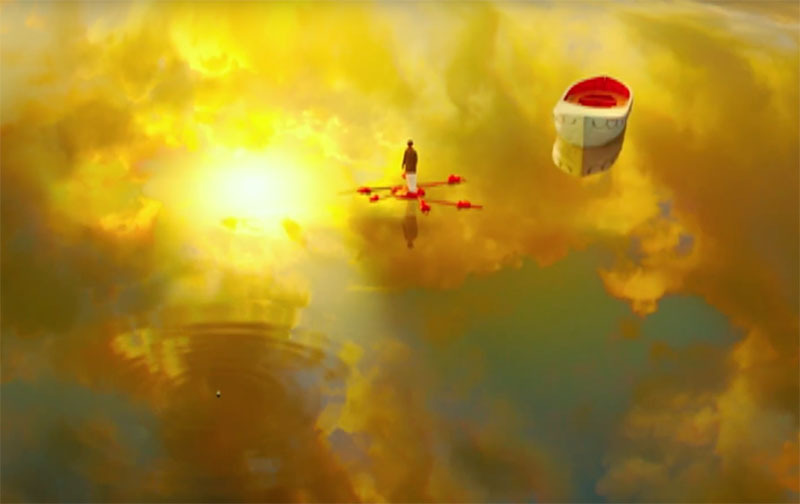
The list of disaster-at-sea movies is too long to mention here. In many cases, these films cannot be considered sailing movies (we’re talking to you Titanic and the Perfect Storm). And in some instances — such as White Squall — the disaster is not the central theme of the movie, and it’s refreshing to see the characters living their lives outside the context of tragedy, however fleeting it may be.
We’d like to know: What’s your favorite disaster-at-sea film?
